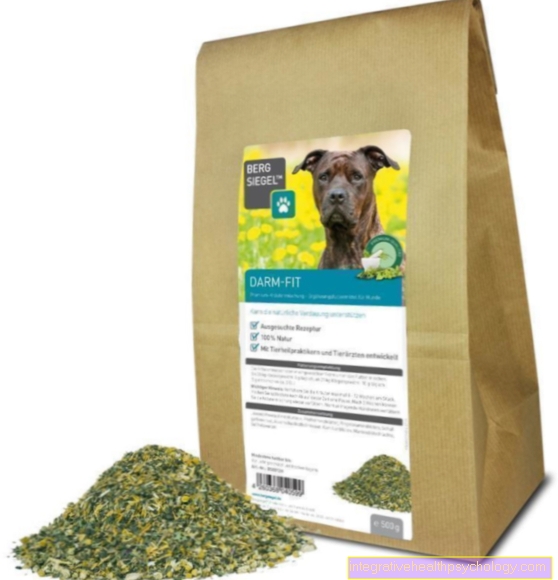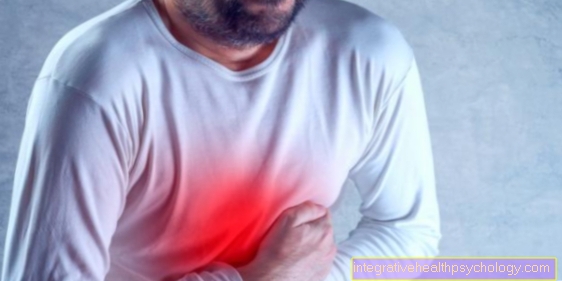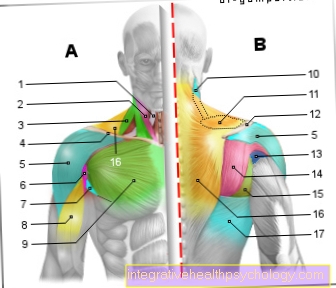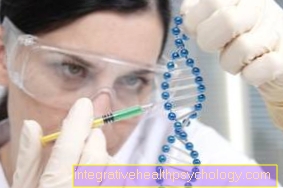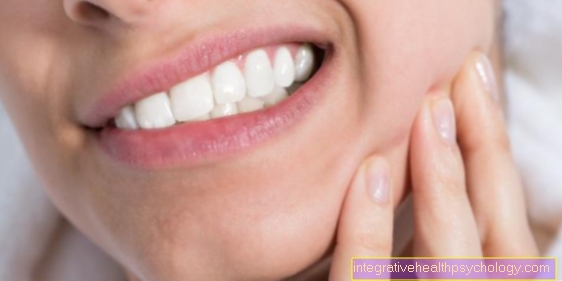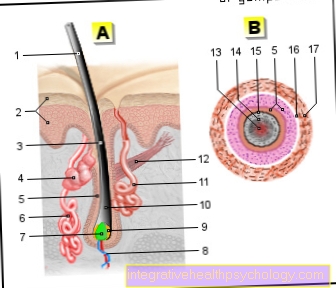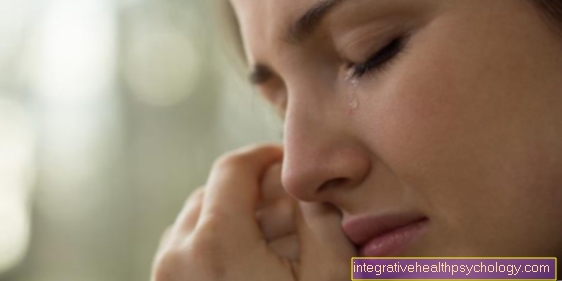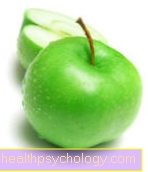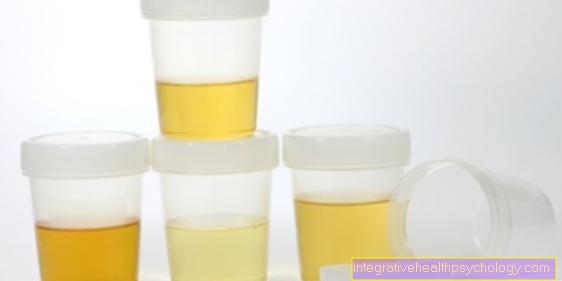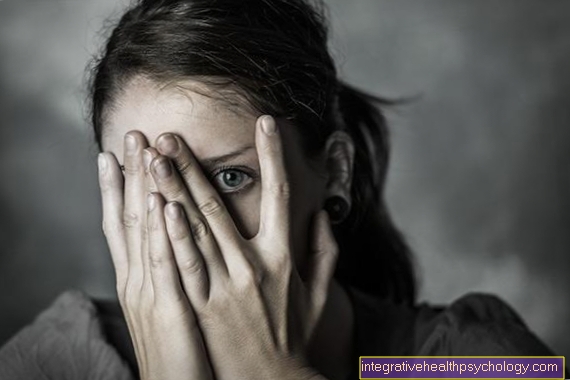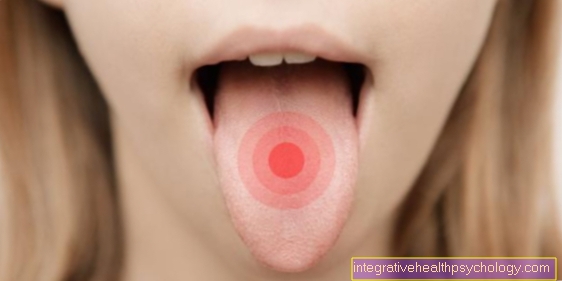Rosacea
Definition of rosacea
The clinical picture of rosacea is a chronic inflammation of the facial skin.
The middle third of the face is particularly affected by this disease.
Usually this harmless disease occurs in middle adulthood. About 0.5 to 2 percent of patients in a dermatologist's practice are affected.
Women are affected slightly more often than men. What is striking is the fact that fair-skinned people are particularly affected.
Rosacea usually comes in phases. Some patients, especially men, develop a bulbous nose (rhinophyma). In about half of the patients, the eyes are involved in the course of this disease. Regardless of the severity of rosacea, patients often suffer from conjunctiva and eyelid inflammation. Dry eye can also develop into a problem.

Causes of Rosacea
Many different influencing factors play together in the development of rosacea. Each and every one of these factors increases the likelihood of getting sick. However, there is no single trigger that will definitely lead to rosacea.
On the one hand, one suspects a regulatory disorder of the vessels in the face. Especially at the beginning of the disease, warmth, rapid temperature changes or emotional stress often lead to blushing (so-called flush), which is caused by an unnatural widening of the vessels.
Please also read our article on this Flush syndrome
The skin of rosacea patients often reacts strongly to cosmetics, i.e. make-up, lotions, soaps and the like.
It is also assumed that nerve inflammation in the area of the face leads to an increased reaction of the vessels and the skin to external stimuli.
Another factor seems to be the colonization of the skin with microorganisms. More precisely, they are hair follicle mites. That sounds repulsive at first, but hair follicle mites can be found on the skin of practically everyone.
However, there are many more of these mites in rosacea patients. In addition, the natural immune system of some people with rosacea seems to react particularly strongly to these hair follicle mites. This explains why inflammation does not occur in healthy people, but it does in rosacea patients.
Many patients also report certain factors that make symptoms worse. These include E.g.:
- Exposure to sunlight
- heat
- Cold / cold wind
- alcohol
If these factors have been identified as triggers, they can be avoided as much as possible.
Who does rosacea affect?
The disease usually begins in middle age, i.e. between 40 and 50 years of age. Slightly more women are affected than men, but the growths of the sebum glands are much more common in men, which is why the suffering of the men concerned is higher.
About 10% of the population in Central Europe are affected. Since the disease almost only occurs in advanced age, the proportion of people affected is much higher in old age. It almost exclusively affects fair-skinned people.
Symptoms of Rosacea
Symptoms of rosacea include redness and the formation of veins. In more severe cases, inflammatory papules and pustules can also occur. You can find more about papules and pustules under our topic Skin changes and rash with pustules.
In contrast to acne, rosacea does not have blackheads next to the pus-filled pustules.
However, mixed forms are conceivable. The middle third of the face (forehead, nose, cheeks) is particularly affected by these symptoms.
Aside from these symptoms, those affected feel healthy.
So there are no general symptoms such as fever. However, in some patients the obvious "distortion" leads to considerable psychological stress.
As different as the individual is, the effects of the disease can also differ. From slight reddening of the cheeks to accompanying acne of the entire face. It can also happen that the rosacea stops in one of the stages described above.
Rosacea on the eyes
Rosacea can also manifest itself in the eyes. About 25% of patients are affected. In these cases one speaks of ocular rosacea.
The symptoms are above all
- permanently reddened eyes
- Foreign body sensation
- Burning and itching
- Swelling
- Photosensitivity
- Visual impairment
- dryness
- Lid margin, cornea and conjunctivitis.
In rare cases, ocular rosacea can lead to blindness.
Treatment depends on the stage and the symptoms. From stage 2, oral medications can also relieve ocular rosacea. From this stage onwards, the involvement of the eyes in rosacea can be positively influenced by certain antibiotics in tablet form. For example, treatment with tetracyclines 2 x 250 mg per day is successful. The duration of the intake depends on the active ingredient. The use of doxycycline is usually recommended in the stated dosage for 4 weeks. Taking minocycline for 2 to 6 weeks may be advisable in this regard.
Anyone with rosacea should have their eyes checked regularly by an ophthalmologist. Ocular rosacea is incurable, but it can be easily controlled with adequate treatment.
Stages of rosacea
Rosacea usually has several stages.
In the early stages of the disease, reddening (erythema) of the facial skin occurs only occasionally, then more frequently. These "flushes" are usually sudden, seizure-like and are very uncomfortable for the sick person. In this preliminary stage, the skin of the face becomes increasingly irritable and reacts faster and faster with reddening until it finally becomes permanent.
In stage I of the disease, the skin is permanently reddened and the irritability of the facial skin increases again significantly. For the first time, fine, superficial vascular sprouting (telangiectasia) appear in the extensive reddening.
Increased itching, tension, stinging or pain must also be expected. The doctor calls this stage "rosacea erythematosa-telangiectatica" because both redness ("erythema") and vascular sprouting ("telangiectasia") occur.
In stage II, nodules and pus vesicles appear on the redness. The changes mostly affect the central face and are usually symmetrical. The longer the disease persists, the more likely it is that the chin, forehead, and the edge of the face will also be affected. The doctor calls this stage "rosacea papulopustulosa" because nodules ("papules") and pus vesicles ("pustules") occur.
In stage III, extensive, benign skin growths occur, especially on the nose. The skin appears coarse and uneven. The sebum glands are enlarged. It comes to the bulbous nose ("rhinophyma").
The most severe form of rosacea is rosacea fulminans. Acute skin changes develop within a few days, especially lumps and purulent pimples.
The skin is very greasy and can be severely inflamed. From the rosacea fulminans are almost only younger women affected. Although the skin changes are very strong, those affected often do not feel sick, although the unsightly sight is psychologically very stressful. Fortunately, this form of rosacea can be treated fairly well and the changes tend to regress if treated without scarring. Relapses are also not to be feared with rosacea fulminans.
diagnosis
The diagnosis can often be made based on the typical symptoms that occur primarily on the forehead, nose and cheeks.
In general, the skin of rosacea patients is thickened and has large pores. Skin biopsies (tissue samples) can be taken to rule out more rare diseases such as butterfly lichen.
I have rosacea, what can I do?
For one thing, you should continue to heed the preventive measures already mentioned.
By properly caring for your skin, you can make a significant contribution to the mild course of the disease.
They should be best when washing the skin of the face lukewarm water use as rapid temperature changes irritate the skin. Beware of "refreshing" Ingredients. Cosmetics for men in particular often contain menthol or Fighter! Even if the skin then feels fresh: These substances irritate the skin and should be avoided.
Use pH skin neutral Soap. This means that the soap has the same (slightly acidic) pH as your skin. This does not neutralize the skin's natural protective acid mantle.
In addition to chemical stimuli, your skin should also apply them physical stimuli protect. That is, they dry your face careful from. Also Peels harm the skin in rosacea. Even if it makes sense to use an exfoliator on coarse skin, it does more harm than good!
If you use a care product after washing, you should be closer to products Water-based to grab. Greasy ones Ointments tend to close the pores of the skin, which is rather unfavorable in rosacea.
If in doubt, you should seek advice from the pharmacy or your dermatologist about your illness and your Skin type is best used. Here, too, you should avoid products with dyes and fragrances.
Treatment with creams / ointments
Depending on the severity of rosacea, certain creams and ointments are advisable. Individual advice from a dermatologist is recommended at every stage. Basically, only mild, pH-neutral skin care and skin cleansing products should be used. The skin should be washed with lukewarm water and dried with a soft towel before a nourishing cream is applied.
Care creams should always contain a high sun protection factor or a sunscreen should be combined for stays in sunlight.
Fatty products and products with essential oils should be avoided.
Men should avoid unnecessary skin irritation before applying creams and ointments. This means that - if possible - a wet shave should be avoided. In the first stages of rosacea, targeted, individual application of creams and ointments is often sufficient.
Medicines are often not necessary in the preliminary stage and in the first stage. The aim of the treatment is to prevent and alleviate reddening of the skin. The dermatologist can find out the right products with the people concerned. In the preliminary stages, known as rosacea diathesis, special intensive care is often sufficient.
In stage 1, prescription anti-inflammatory creams and ointments are indicated. The creams and ointments usually contain antibiotics. Their active ingredients are usually azelaic acid, metronidazole, tetracycline or clindamycin. The right active ingredients are selected based on age and other factors. For example, tetracycline must not be used in children or during pregnancy.
In stage 2 of rosacea, in addition to creams and ointments, temporary use of medication in tablet form is often advisable. As a rule, neither cortisone ointments nor a cortisone treatment with tablets are effective for rosacea.
The advanced stage of rosacea is stage 3. Further measures are often required. Under medical guidance, isotretionin therapy is effective in some cases.
When treating rosacea, it is particularly important not to try your hand at creams and ointments, but rather under the guidance of a dermatologist.
It is also important to be patient. Sometimes it takes a few days or weeks for the treatment to work.
What can my doctor do about rosacea?
Rosacea can and should also be tackled with medication. It is important that the treatment is carried out according to the stage of the disease. This avoids letting the disease progress without shooting sparrows with cannons.
In stage I and II of the disease, it is sufficient to treat only the skin. The doctor speaks of "topical treatment". In the topical treatment of rosacea, the active ingredients metronidazole and azelaic acid are particularly effective.
Azelaic acid is an antibacterial and anti-inflammatory substance that is similar to vitamin A. It reduces nodules and pus vesicles a little better than metronidazole.Azalaic acid is available as a gel and cream and requires a prescription.
Metronidazole is an antibiotic that works against oxygen-avoiding bacteria (anaerobes). The effect of metronidazole has also been proven beyond doubt in several studies. Metronidazole is also anti-inflammatory.
Research is currently investigating whether so-called retinoids are effective. Retinoids are actually anti-acne drugs, but they also appear to help with rosacea.
However, none of these topical agents have any effect on skin redness. Only the lumps and blisters improve. No medication against reddening is currently approved in Germany.
In stage III of the disease, but also in the case of sudden, severe courses (rosacea fulminans) and if the eyes are affected, antibiotics in tablet form (systemic) are used. These include in particular tetracyclines. However, caution is advised here with pregnant women, breastfeeding women and small children! Tetracyclines are built into growing bones and teeth and color them yellow.
If the inflammation is severe, it is possible to use cortisone for a short time. Normally, cortisone is forbidden in rosacea, but in severe cases it can successfully disrupt the initial inflammatory response.
Recently, a new type of drug called tacrolimus has also been increasingly used. Tacrolimus is actually an immunosuppressant, i.e. a drug that reduces human immune responses. Used as an ointment or cream, it helps to reduce the inflammatory reaction of the skin.
Read more about here Tacrolimus.
Read more on the topic: Rosacea cure and Medicines for skin diseases
What to do if you have a bulbous nose caused by rosacea?
Especially in men, rosacea causes a bulbous nose (rhinophyma). This is not dangerous, but very ugly. It can be reduced by isotretinoin, a drug developed for acne and other skin conditions.
Most effective, however, is the ablation. Depending on your experience, the dermatologist will advise you on different procedures:
On the one hand, the growths can easily be surgically removed with a scalpel.
In addition, there is the possibility of removing the excess tissue using various types of laser without a blade.
In addition, the fabric can also be frozen.
Is Rosacea Contagious?
No! Although it is inflammation, there is no risk of becoming infected. Rosacea cannot be transmitted by coughing or skin contact.
Will my children get rosacea too?
Yes and no! Although rosacea cannot be inherited directly, there are clusters of preliminary stages of rosacea in some families. It is unclear whether this is due to a still unknown factor. However, whether the disease breaks out and whether the children often get relapses also depends on the influencing factors mentioned above.
Prognosis - is rosacea curable?
Since the cause is unknown, there is no complete cure for rosacea. Rosacea is one of the chronic inflammatory skin diseases. Only symptomatic treatment and delaying the progression of the disease is possible.
The course of the disease can therefore only be influenced to a limited extent. One speaks of a recurrent course. But an early, adequate start of treatment can contain the symptoms well.
An effective treatment consists of several building blocks. These can consist of individual advice and guidance on UV protection, cleaning and care of the skin, local and systemic drug treatment and surgical or laser surgical measures. Rosacea can be well controlled through individual measures taken as needed. Even at an advanced stage, there are options so that the disease only restricts everyday life to a limited extent.
In around 20 percent of patients, the eyes get sick first - before the skin symptoms appear. Since this involvement of the eyes can in rare cases also lead to blindness, an ophthalmologist should be consulted in addition to the dermatologist.
For more on this, see: Cure Rosacea
prophylaxis
The important thing is to avoid the risk factors and triggers. These include, for example:
Direct sunlight, which irritates the skin with UV light. For example, sunscreen can help if you are known to be sensitive. The sun should also be avoided completely around noon in summer.
Irritation from cosmetics is quite common. Therefore, aggressive agents should be avoided.
Alcohol also seems to irritate the vessels on the face. Therefore, alcohol should only be consumed in moderation.
It is similar with spicy food and hot drinks. Food that is too spicy stimulates the skin's temperature regulation and dilates the blood vessels, which can trigger a flush.
Psychological stress, which is also known as a trigger for rosacea, is less avoidable.
History of rosacea
In the Rosacea it is by no means a modern disease. It was described by a French doctor as early as the 14th century.
In one of his plays Shakespeare describes men with red faces and big noses. Signs of this disease can also be seen on several paintings. For example, a 17th century self-portrait by Rembrandt.
Related topics
Related topics that may also be of interest to you are:
- You are here: article rosacea
- Rosacea cure
- dermatology
- psoriasis
- Skin changes
- skin
- Dry eyes - what to do?
- red spots on the neck
A list of all the topics on dermatology that we have already published can be found at:
- Dermatology A-Z

